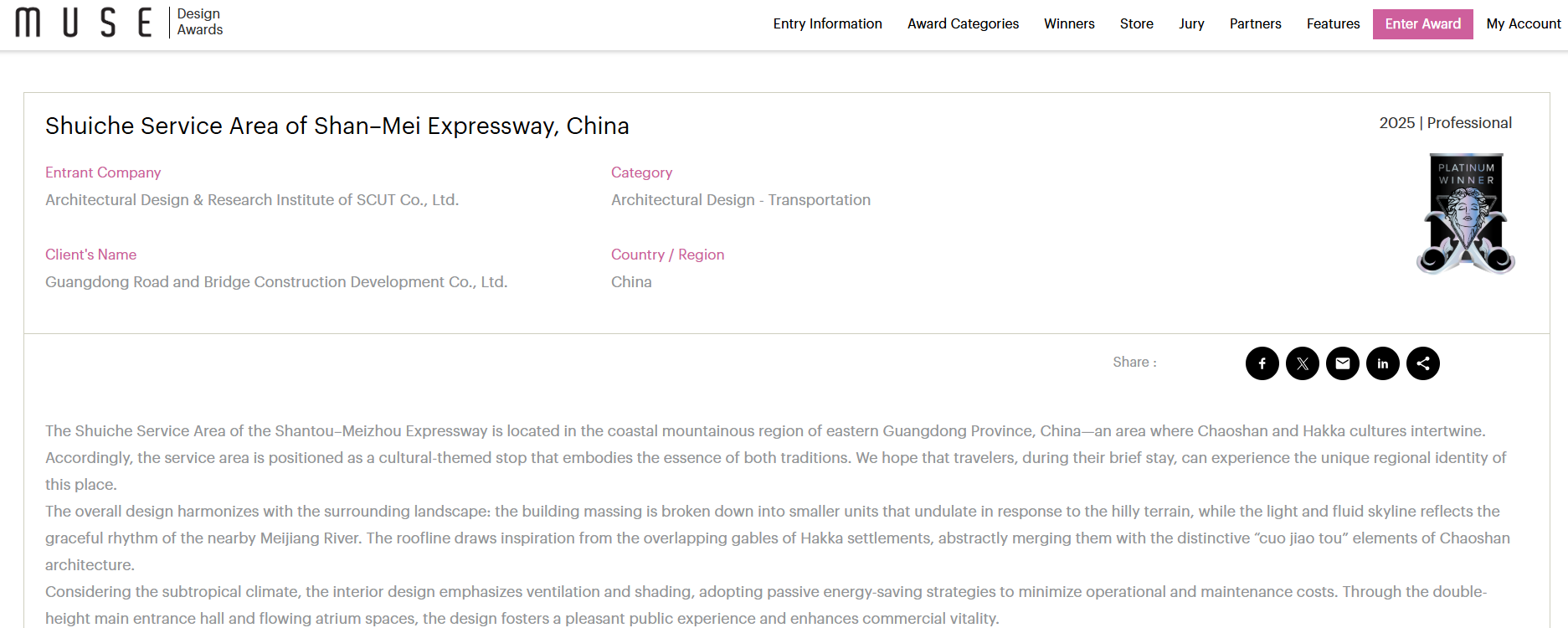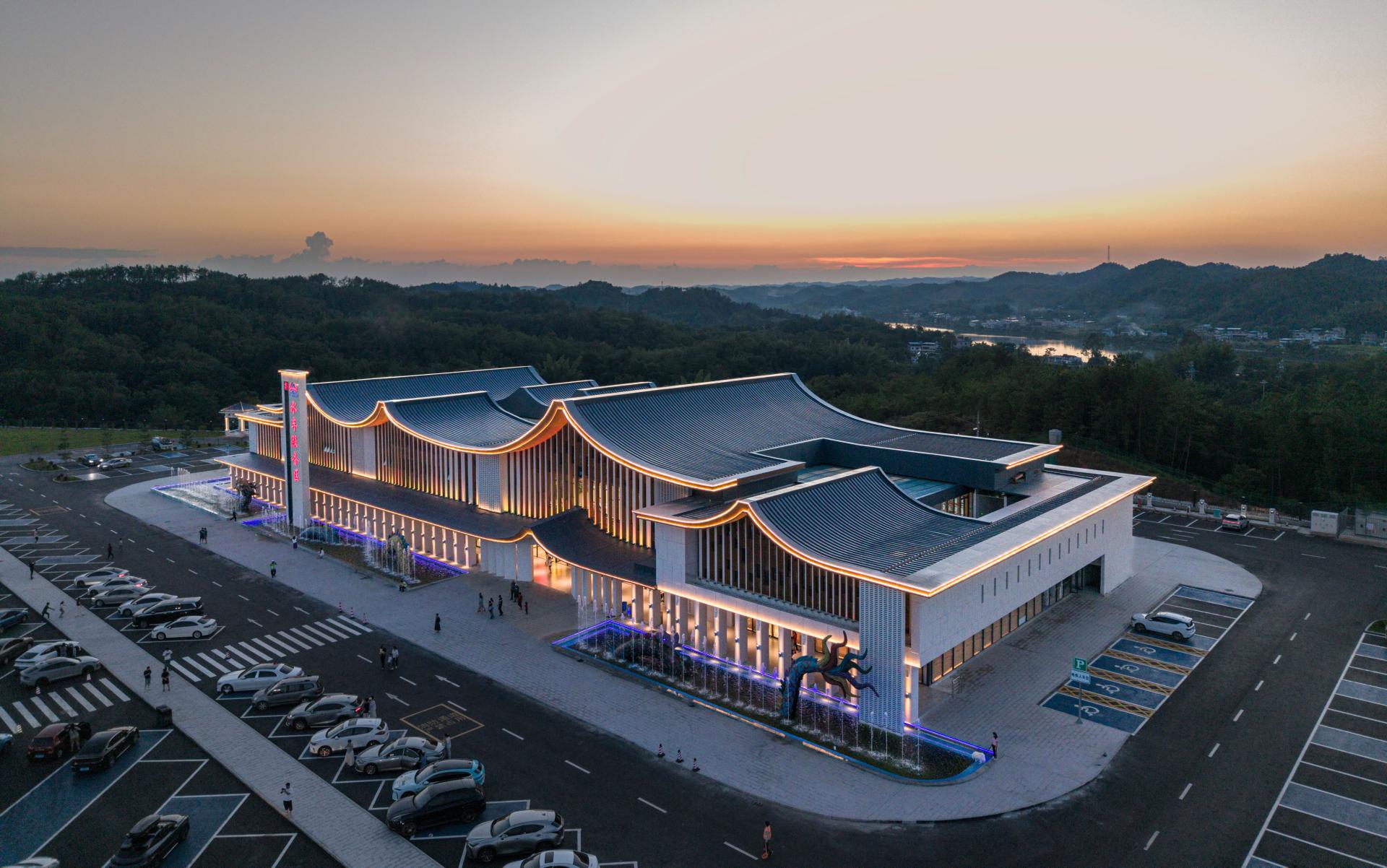Recently, the winners of the MUSE Design Awards, a global design competition, were officially announced. The Shuiche Service Area of the Shantou-Meizhou Expressway distinguished itself among numerous entries worldwide by winning the "Platinum Award"—the highest honor in the Transportation Category of Architecture Design—thanks to its unique expression of Chaoshan and Hakka regional cultures and innovative spatial design.

Established in 2015 by the International Awards Associate (IAA), the MUSE Design Awards are recognized as one of the most influential honors in the global design field. With a rigorous review system and evaluation criteria focused on exceptional quality, it encompasses three tiers of honors: Platinum Award, Gold Award, and Silver Award.
The Shuiche Service Area of the Shantou-Meizhou Expressway is located in Shuiche Town, Meixian District, Meizhou City. The service building, designed by a team led by He Jingtang, Academician of the Chinese Academy of Engineering, embodies a deep integration of natural terrain and regional culture.

The building massing is broken down into smaller units that undulate in response to the hilly terrain, fitting naturally into the landscape. Its facade features curves in the shape of "ren" (人, "human" in Chinese) that outline the contours of mountains and rivers, while the light and fluid skyline reflects the graceful rhythm of the nearby Meijiang River, forming a spatial sequence with distinct layers.

The roof design draws inspiration from the overlapping gable forms of Hakka settlements and incorporates the iconic "cuo jiao tou" (specialized roof corner elements) of Chaoshan architecture, giving the building a strong sense of regional identity.
The construction team applied Building Information Modeling (BIM) for full-process simulation and in-depth design. Additionally, it integrated natural lighting, ventilation, and shading while adopting energy-saving strategies. This not only ensures a comfortable experience for drivers and passengers but also contributes to constructing the expressway in a low-carbon manner.

In the outdoor area of the Shuiche Service Area, a "colorful porcelain dragon" made of more than 10,000 pieces of Chaoshan inlaid porcelain stands tall and appears to soar into the sky in front of the service building in the west area. In front of the service building in the east area, a 7-meter-high wooden waterwheel rotates gently, recreating the working scenes of the Hakka people's ancestors.


In the indoor space, the atrium ceiling takes inspiration from the shape of a Hakka "rice bucket," symbolizing a bumper harvest. The seats are designed to resemble "sailing boats," implying a safe return. The walls are inlaid with Hakka and Chaoshan dialects along with their Pinyin annotations. The "thousands of households"-themed facade of the lobby in the east area consists of the silhouettes of Hakka earth buildings. When illuminated, it radiates with the warmth of a thousand lights shining at night.
Photo | Meizhou Daily, MUSE Design Awards
Editor | Hu Binni (intern), Wang Lihan (intern), Liu Lingzhi, James Campion, Shen He
















